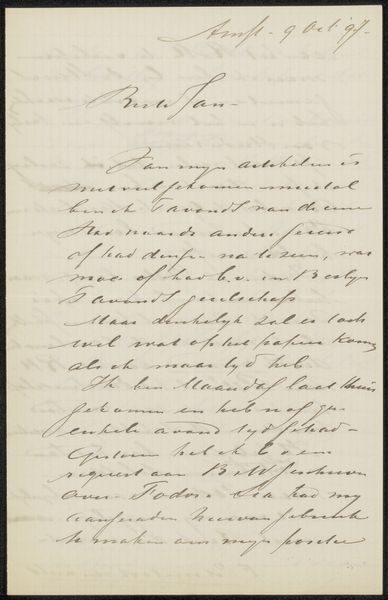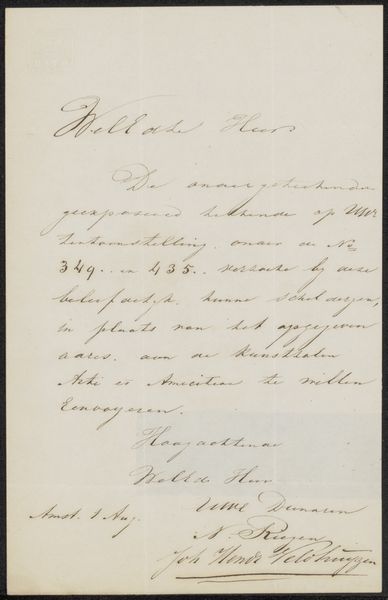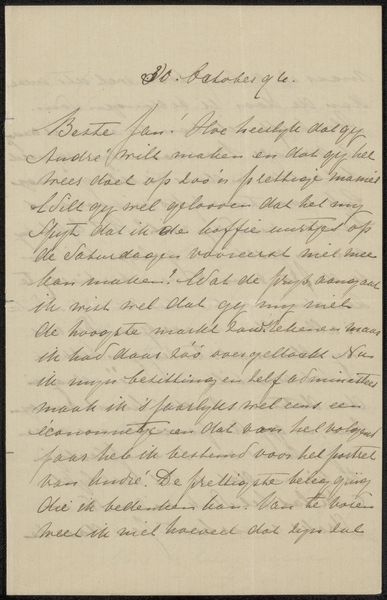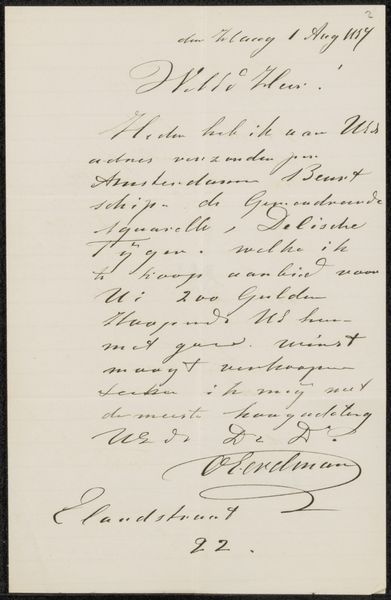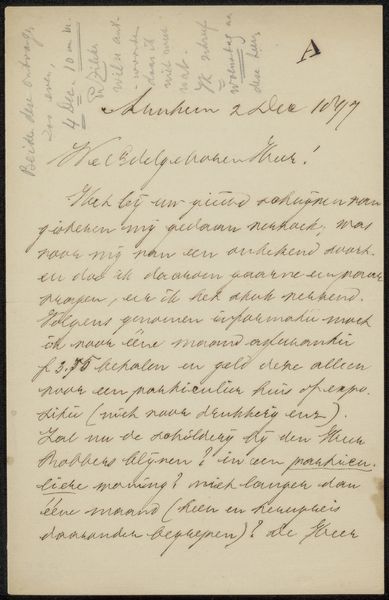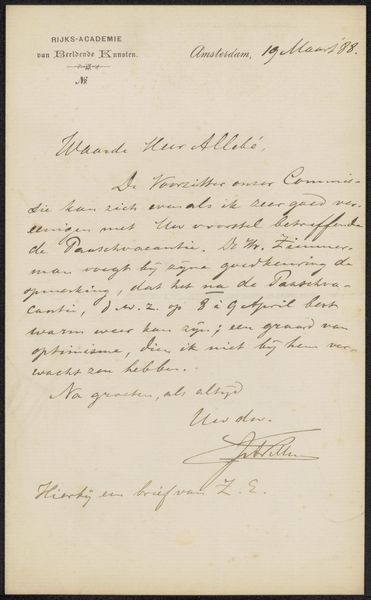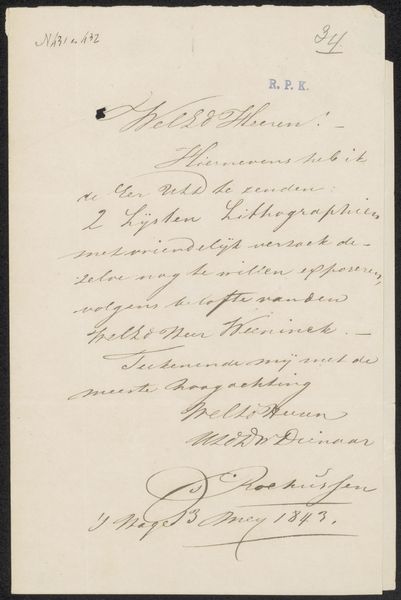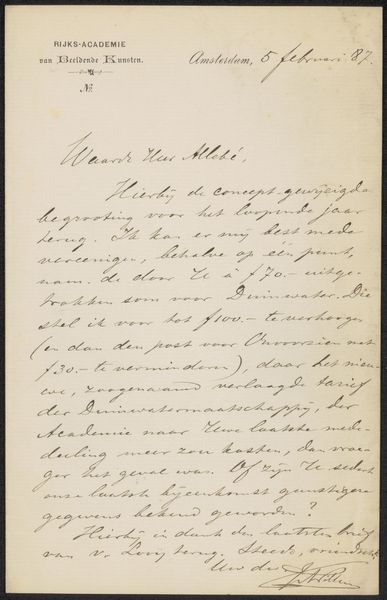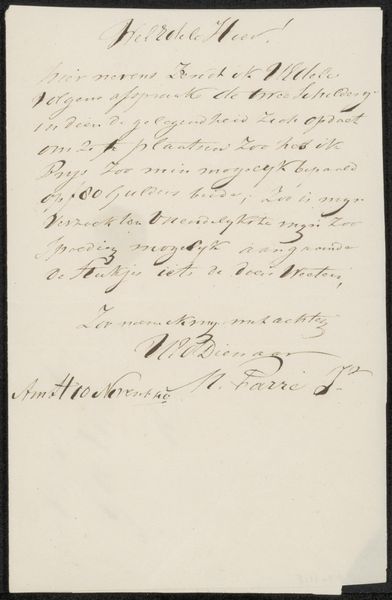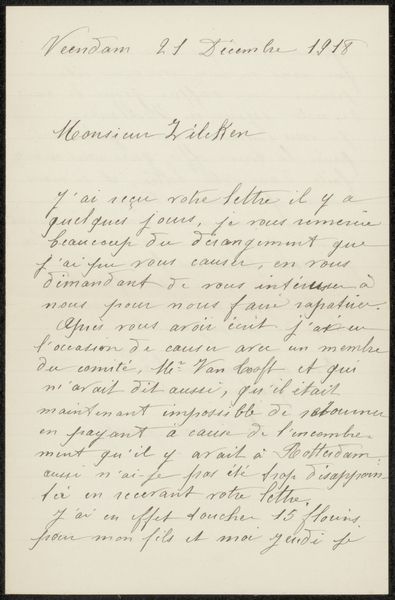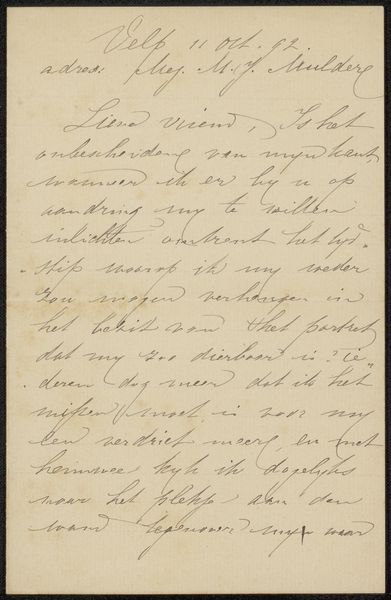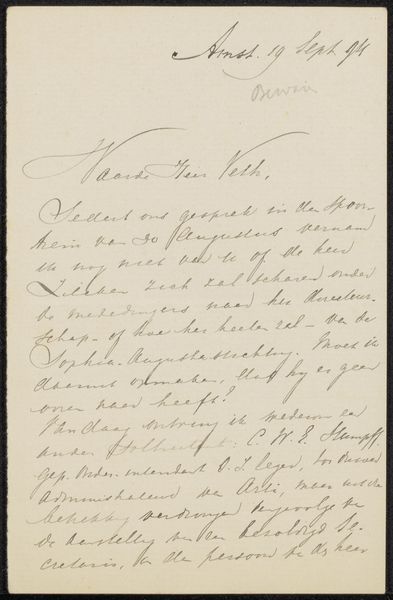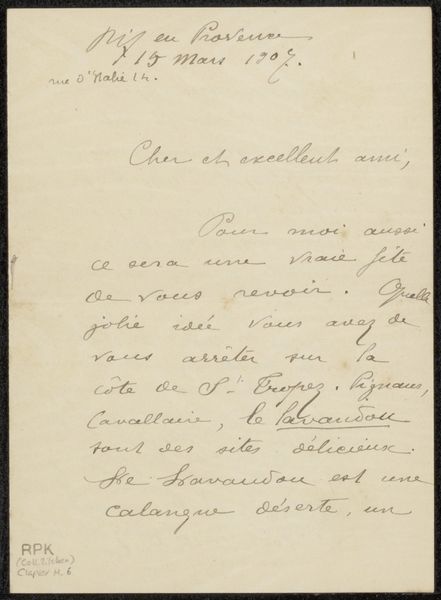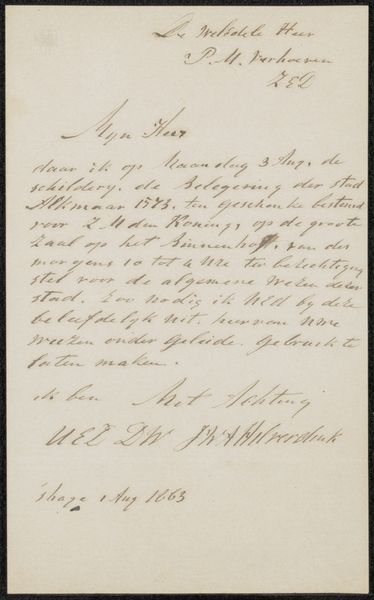
drawing, paper, ink, pen
#
drawing
#
aged paper
#
hand-lettering
#
old engraving style
#
hand drawn type
#
paper
#
personal sketchbook
#
ink
#
hand-drawn typeface
#
ink colored
#
pen work
#
sketchbook drawing
#
pen
#
sketchbook art
#
calligraphy
Copyright: Rijks Museum: Open Domain
Curator: This piece is titled "Brief aan Philip Zilcken," possibly created in 1893 by Casper Marinus van Stockum. It's rendered in ink on paper, showcasing an elegant calligraphic style. Editor: The immediate impression is its fragility and intimacy. You can almost feel the texture of the aged paper. It’s incredibly evocative. Curator: The materials here are quite straightforward, but they speak volumes about the creation of such documents in that period. We can imagine van Stockum carefully selecting his pen and ink. Editor: And how handwriting itself became a means of production! Consider the culture of letter-writing in that era and its implications. Think about the accessibility of it and the social circles this document reflects. Was it meant to be private, or to circulate within an elite art world? Curator: Absolutely, and it suggests a level of literacy and access to education. The social context here shapes its reception, even now. Editor: We can only speculate on the full story surrounding the artwork, given its condition, but there's still significant aesthetic value embedded within. Note the specific hand-drawn typeface; its very uniqueness is suggestive of the artist’s intentions, a material manifestation of artistic personality. Curator: Indeed. The letter mentions being handed a card for a performance of Pelléas et Mélisande, which speaks to a certain cultural milieu, perhaps connected to Debussy's opera that was gaining popularity around that time. Editor: That detail allows for the artwork to connect to broader socio-political artistic trends—even though at first it seems simple and isolated. What were the political associations with avant-garde productions like *Pelléas et Mélisande*? Curator: The beauty of historical analysis allows us to engage with that directly. Thank you, Editor, for elucidating many important facets about "Brief aan Philip Zilcken.” Editor: And thank you for laying bare the work’s more literal features. I'm always inspired when material artifacts contain the faintest trace of how meaning takes form within them.
Comments
No comments
Be the first to comment and join the conversation on the ultimate creative platform.
